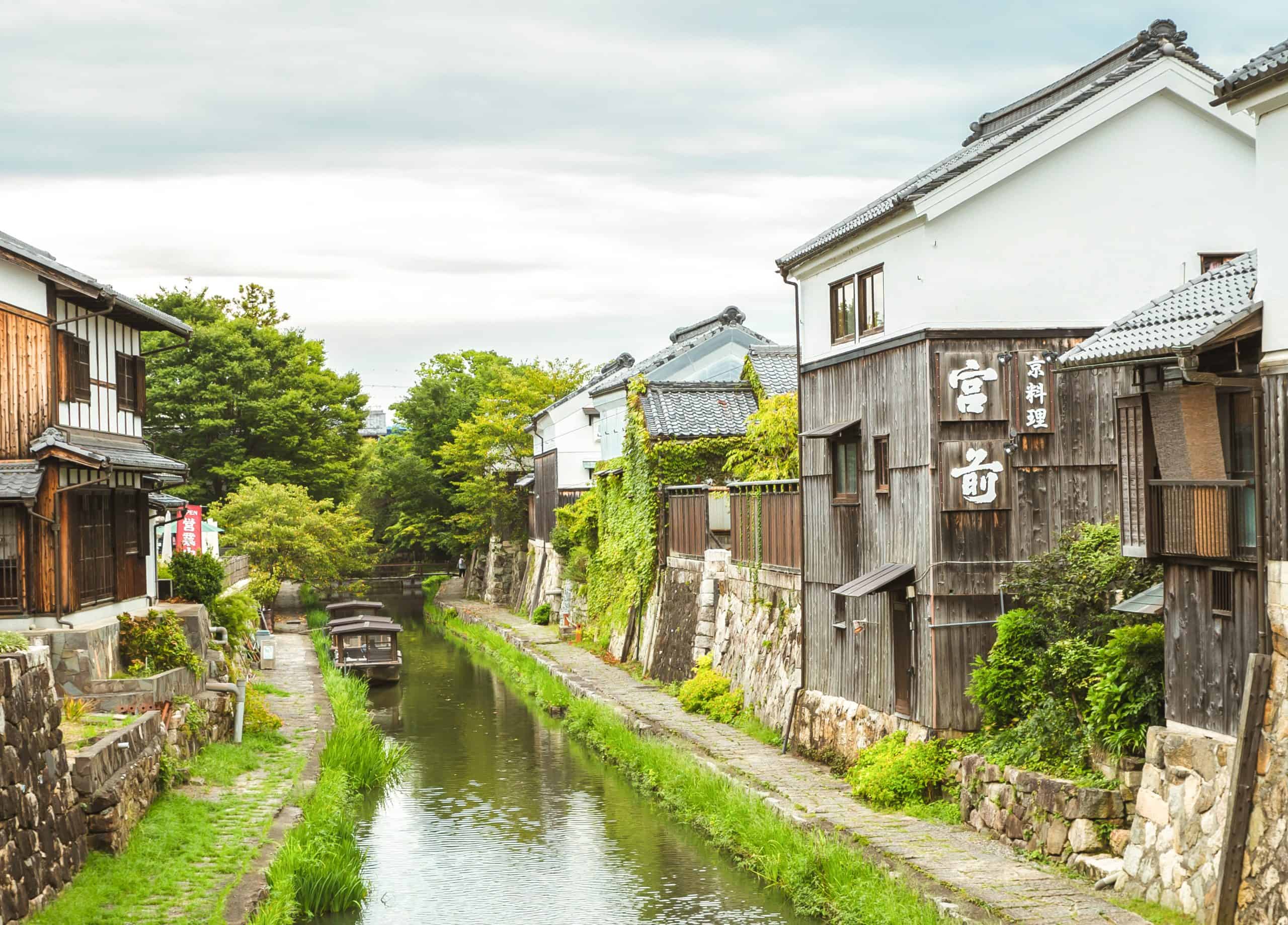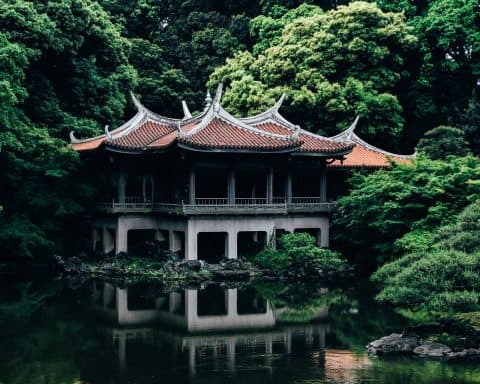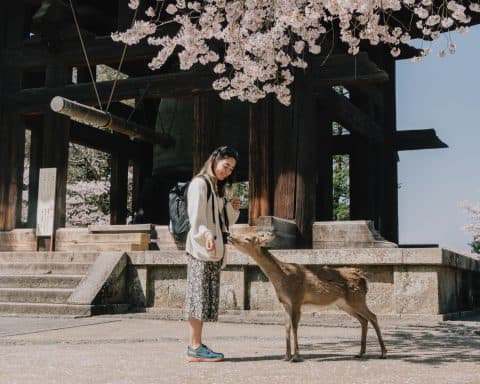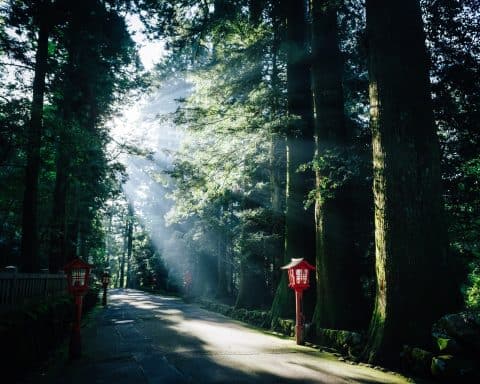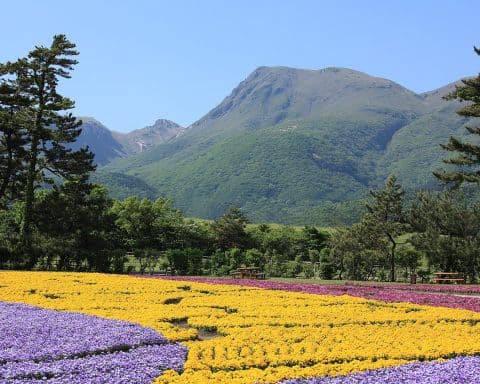Best for: Those who like off the beaten track places
If you’re someone who’s been to Japan more than once, or someone who loves an adventure, you’re probably looking for something a little different from what the tourist books have to offer.
You’ve enjoyed Tokyo and Osaka, maybe even Hokkaido and Hiroshima as well as multiple surrounding towns, but none of them seemed to have the “local” vibe you were hoping for.
Well, it’s time to head off the beaten track to the quaint riverside town of Gujo Hachiman, in Gifu.
Gujō-Hachiman is most well known for its intricate network of waterways and canals that snake throughout the town. The water is so clear that many residents wash their fruit, vegetables, and even laundry in.
The extremely clean water that flows through the rivers, canals, and fountains is a source of great pride for all who live there and that makes it a reason that so many (including you!) people chose to visit the town each year.
Getting to Gujō Hachiman
I’ll assume for a moment that you’re coming from either Osaka or Tokyo, and don’t have access to a car. Of course, a car will almost always make things a lot easier, especially if you’re not travelling in a city or are travelling with friends.
From Tokyo
Average Time: 4 Hours
Average Cost: ¥14,000 ($121)
The entire trip from Tokyo Station to Gujō-Hachiman Station, on average, takes about 4 hours depending on which form of public transport you take.
The above map involves taking a Shinkansen to Nagoya station and then a coach up to Gujō-Hachiman which explains its shorter journey. Usually, you’ll take the Shinkansen to Nagoya and then it’s either 2 or 3 trains until you reach Gujō-Hachiman Station.
Which train should you get to Gujō-Hachiman from Tokyo?
The difference in cost from the 2 and 3 trains after Nagoya station is about ¥1,000 (just under $10), and the difference in time is over 30 minutes. So if you can spare the money then I highly recommend taking the shorter route.
That said, if you enjoy seeing as much of Japan as possible and don’t particularly have any time restraints, I would take the slower option.
I remember once coming back from Nikko to Saitama and not having enough yen to get on the bullet train. At the time I was slightly frustrated, but it led to a ride on an old rickety train that made its way up and down through a bamboo forest and only had a few other people on it.
Sure, it took about 3 hours compared to the Shinkansens 1, but I wouldn’t change it for the world!
From Osaka
Average Time: 3.5 Hours
Average Cost: ¥9,000 ($75)
It’s a little bit shorter to Gujo Hachiman if you’re travelling from Osaka, and depending on the train you take, it can be a lot cheaper.
For instance, if you chose to ride 5 trains instead of 4, with none of them being a fast bullet train, you can end up paying just over ¥7,000. That’s a little under $60.
The problem with this approach is it will take around 5hrs 30mins…
I know I’ve literally just talked about how much I love long journeys when I travel, but sometimes, maybe, there’s a limit. Unless you’re staying overnight, of course!
Things to do in Gujō Hachiman
1. Get lost
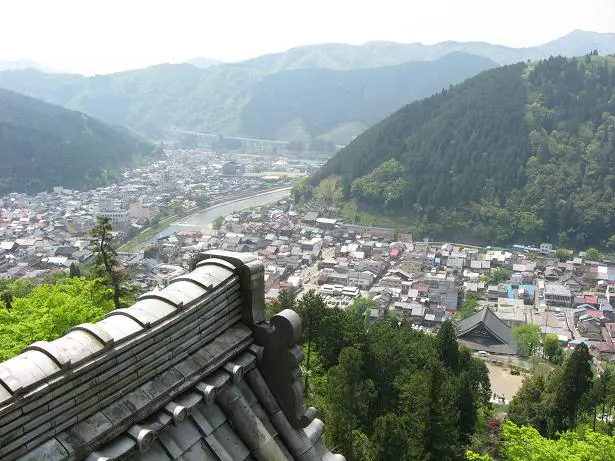
Getting lost in Japan, or anywhere for that matter, should always be first on your bucket list.
Forget about the “must-see” and “must-visit” attractions, and ground yourself in the city. Just be present for a while.
Too often we fly through cities, hurrying along to visit all the attractions, and before we know it, it’s time to head home again.
It’s a lot easier to do than you might realise, and it can leave you feeling like you didn’t really “see” a destination.
Gujo Hachiman is a fantastic place for you to try it out for yourself. It’s not got too much (or too little) to see and do, but the entire town is absolutely stunning, and embedding yourself inside it as best you can for the time you’re there will pay dividends on your future thoughts and feelings about the place.
So do yourself a favour, find some green tea, and chill the hell out!
…Having said all of that, the next 5 things to do in Gujo Hachiman are pretty touristy… Oh well!
2. Find Japanese Sampuru (Fake Food)
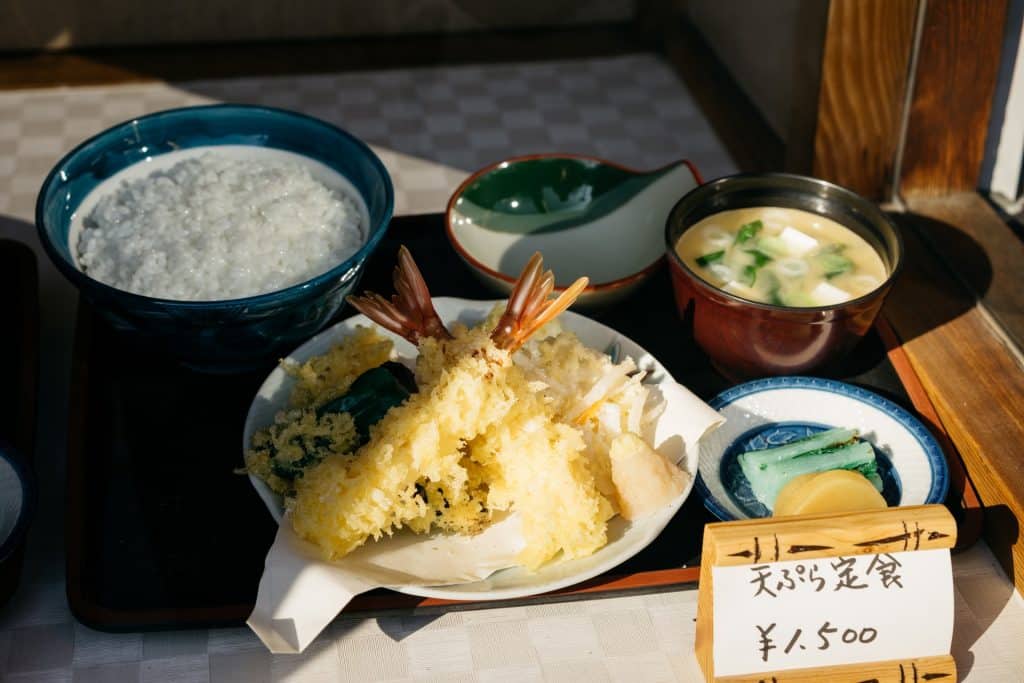
Believe it or not, the little village of Gujo Hachiman is the epicentre of Japan’s entire Sampuru creation. I don’t quite know how that works, but it’s super cool to see such a small place doing something so vital to the country.
If you’ve been to Japan before, this all might not seem totally crazy to you. But if you haven’t, let me explain it a little more.
Sampuru, or “sample food” are model replicas of food that are often seen in the front of restaurants throughout Japan. It’s completely normal and DOES NOT signal a tacky or poorly run establishment, even though I, for some reason, thought it did when I first visited.
If you take a wander down to the town centre, you should even be able to find a couple of places that let you make your own food. No Idea what you’d do with a fake bit of lettuce, but who in their right mind would decline an opportunity like that!?
You can even buy Fake Japanese Food Online, if for some reason you want to!
3. Gujo Hachiman Castle
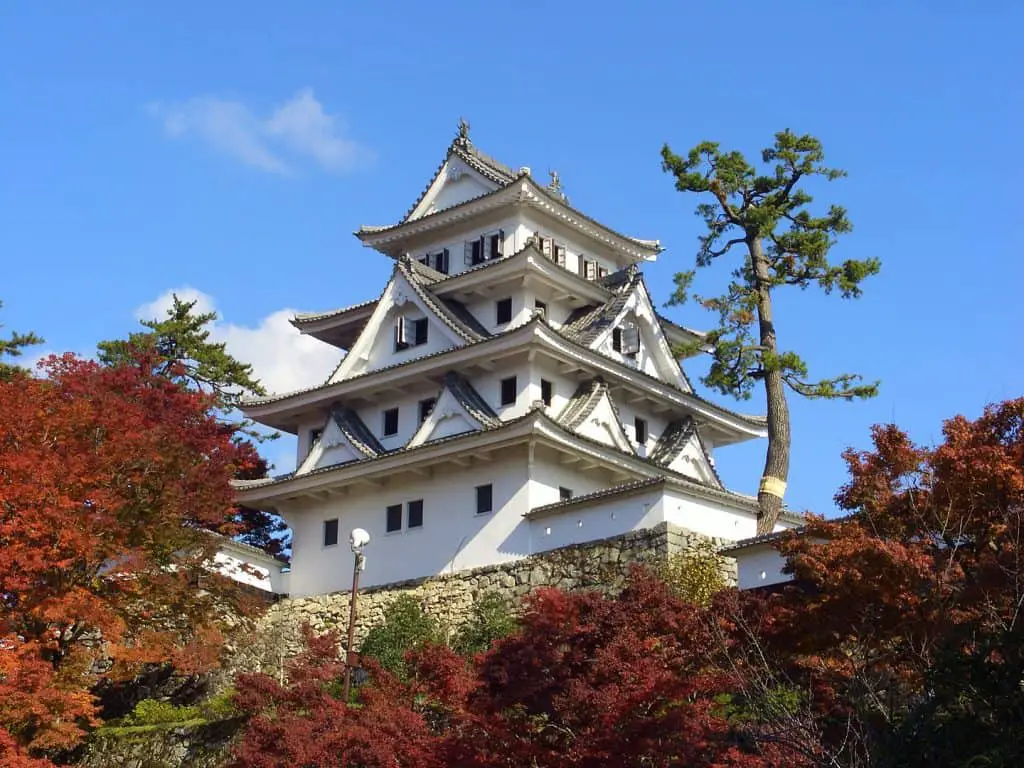
Admission: Adults ¥320, Children ¥150 (Admission to the grounds is free!)
If you’re looking to learn some history about the town and looking to visit some of Japan’s most stunning buildings, the Gujo Hachiman castle should be on your list.
Admission to the castle itself is dirt cheap, or if you absolutely don’t want to pay it’s still more than worth making the climb up the mountain.
Not only can you visit the vast grounds of the castle for free, but you’ll also find some incredible views out over the town. Honestly, I think this place rivals Osaka Castle, but then again, I’ve never enjoyed it there too much anyway. Unless you love history, I don’t think it’s worth a visit if you aren’t in the area. Anyway, back to Gujo!.
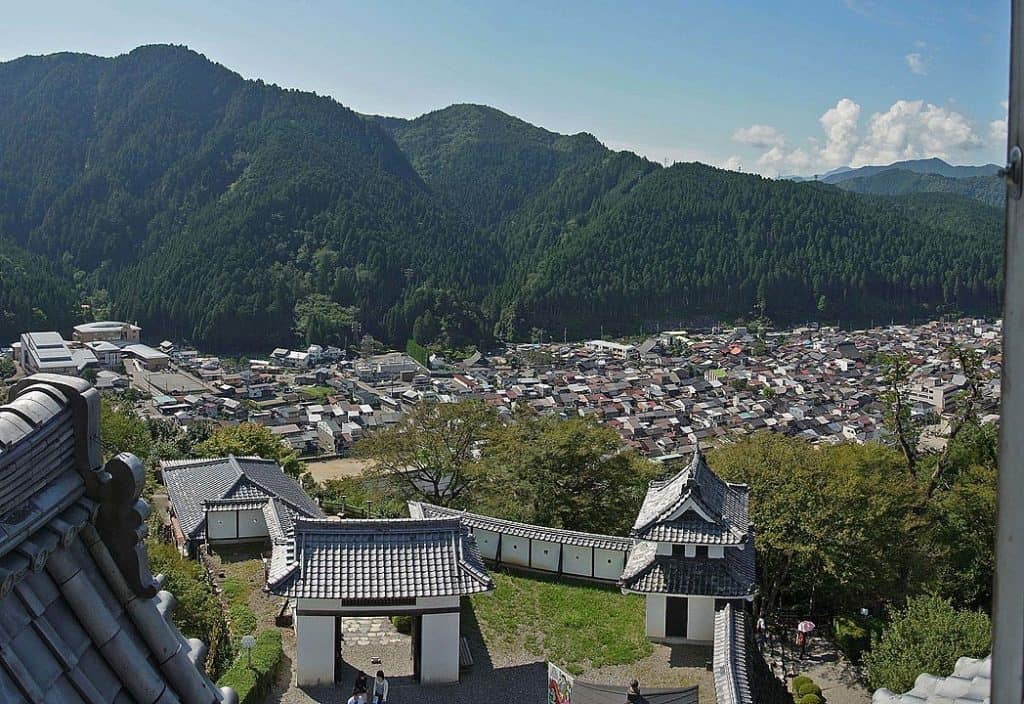
And, like always in Japan, the castle is surrounded by cherry blossom trees making it an absolute treat to view in springtime!
4. Sogi Spring

The Sogi Spring, located in the middle of Gujo is something almost everyone will have time to visit.
It signifies the start of the natural spring that provides the town with so much water. You’ll likely find people using wooden ladles to scoop up, wash their hands, and drink from the water. A similar ritual takes place at the Shinto chōzuya right across the country.
It’s not too far out of the way, and should only take up a short amount of your time if you have other plans.
It’s not much to look at, I know, but I think it’s the unassuming quality that makes it all the more enticing.
5. The Gakko Bridge
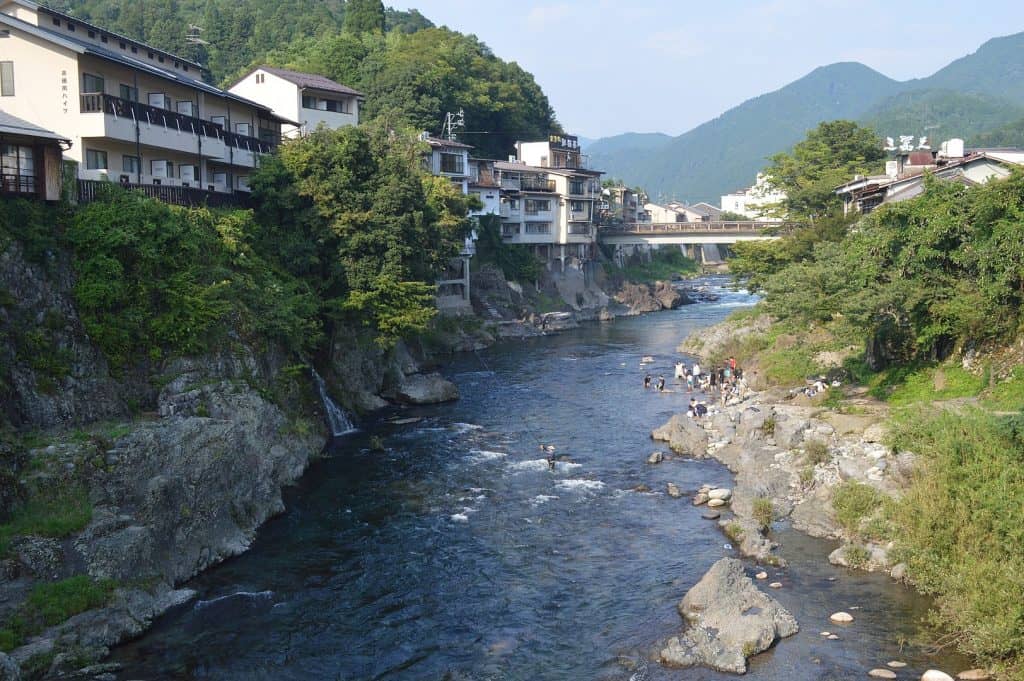
Visiting the Gakko bridge is a must-do if you’re visiting Gujo Hachiman, especially in the summer.
Jumping off the bridge is a “right of passage” type of thing for many of the male teenagers in the town, but there are numerous signs around the area that advise against anyone but locals to jump off. I’d heed those warnings as it’s pretty dam high, and there’s lots of fun to be had around the river anyway
As you can see from the photo above, it’s packed with children and adults making use of the freshwater, from swimming to fishing, and I’ve even seen people use it as a lazy river in a rubber ring!
Or if water isn’t your thing, just sitting on the side and having a picnic is a fantastic idea especially if the weather is warm enough.
Bonus: Gujō Odori (Summer Festival)

I’ve put Gujō Odori on the end as a bonus as, sadly, not everyone will get to visit this wonderful summer festival.
The festival lasts for just over a month (mid-July to early September), and during the middle, they have 4 FULL days of dancing.
Gujo Odori was originally a way of encouraging everyone from the town, no matter the social class, to get together and have a good time. That was over 400 years ago and it’s still happening today! With 300,000 people showing up every summer (250,000 of them for the 4 days of dancing) it’s easy to see how popular this festival actually is.
Whilst you might not be able to see it on your trip, it’s an interesting fact to keep in your brain as you walk around the quiet and unassuming town.
How hundreds of thousands of people fit inside a town of 15,000, I don’t know!
Anywhere else I should visit whilst I’m there?
Honestly, there are a few “Tourist” attractions around there, including museums and a cave, but I’ll let someone else explain those to you. I think your time is better off spent exploring the village and getting to know the local culture as best as possible.
Where to stay in Gujō Hachiman
Your best bet is to check booking.com (or another booking site) and see what kind of property takes you fancy.
I’ve had a look on Airbnb and there only seem to be 3 available properties in the area, but they are all unique and traditional stays rather than just some random apartment or hotel room. Make sure to book them well in advance if you want that!
Hotel Sekisuien is one of the most highly-rated hotels in Gujō, so if you’re looking for a solid stay then it’s well worth a look. It’s a little expensive at around $120 a night, but you shouldn’t need more than one night there if any!
Should I visit Gujo Hachiman?
If you’ve got extra time on your trip to Japan or you’ve already visited the major sights, Gujo Hachiman is a Japanese city well worth visiting..
If you plan things right, you could even make it a day trip from either Osaka or Tokyo. Though I imagine you’d end up very tired!



